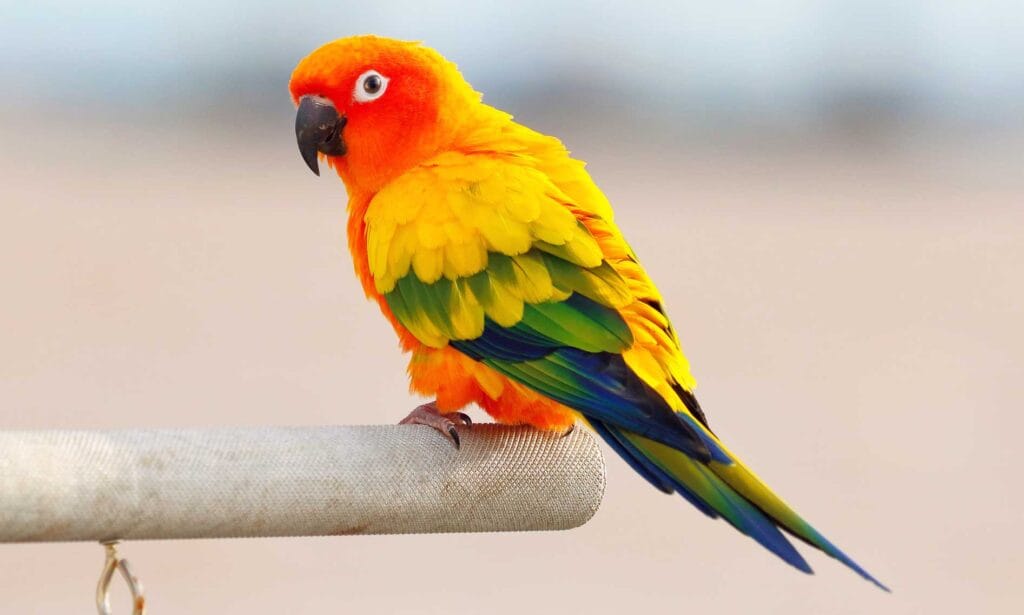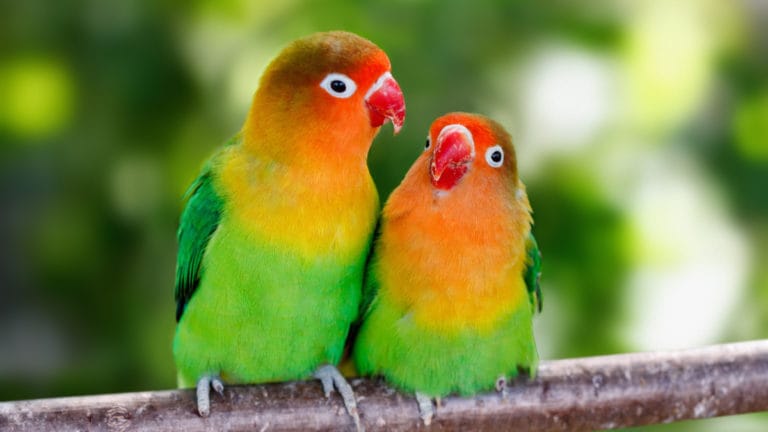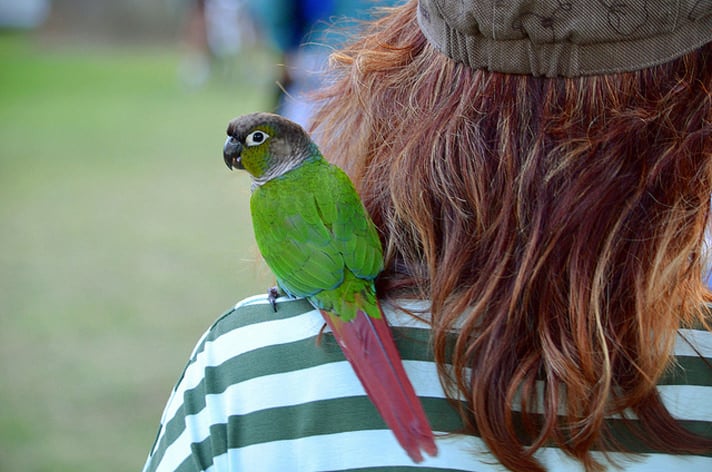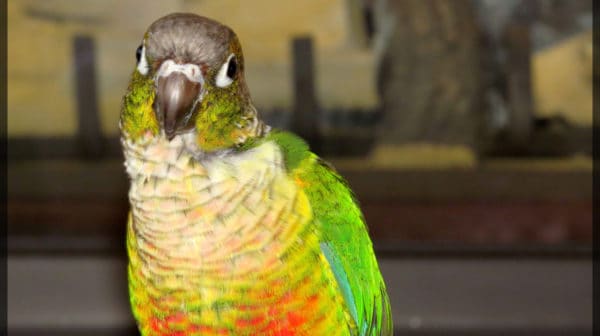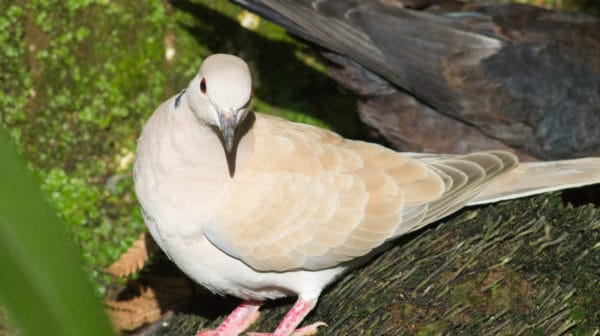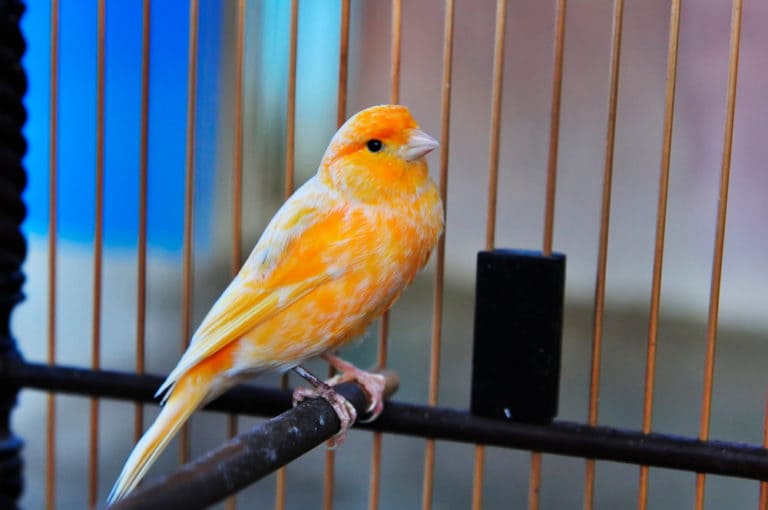Baby sun conures may begin their lives mostly green, but by the time they are 2 years old, sun conures are one of the most colorful companion birds around. Native to Brazil and Guyana, these South American beauties have big personalities—and big voices.
While their volume may not be for everyone—and therefore, bringing a new bird into your life should be a well-thought-out decision—these playful, emotive social birds make loving feathered friends for the right parrot parents. Here are a few facts you may enjoy about sun conures, also known as sun parakeets.
1Sun Conures Tend to be Loud
Every parrot parent should expect noise, no matter the species of their bird. Sun conures, however, definitely fall on the louder end of the sound spectrum.
Sun conures usually aren’t the best for apartment dwellers because their call volume is high, says Marcy Covault of Feathered Companions Aviary in Comanche County, Oklahoma. Additionally, people with sensitive hearing may not appreciate this companion bird’s proclivity to be boisterous.
Those who don’t need silence, however, and can happily endure the squawking may really love this beauty with a big personality and a big voice.
2Sun Conures Aren’t Proficient in Human Speech, But They’re Still Expressive
@vix_de Old MacDonald had a chicken little#singingbird #talkingparrot #petsoftiktok #parrotsoftiktok #birdsoftiktok #fyp #sunconure #foryoupage #dance ♬ original sound - Vicky D
This particular conure species definitely isn’t known for their talking ability, despite its many vocalizations. While they may be able to say a few words in a “quacky” voice, sun conures aren’t big talkers like African Grays or Amazon parrots are known to be.
However, they are very expressive in “bird language” and they’re generally more affectionate and touchy-feely than many of the birds that are known for being better talkers.
Most sun conures are not subtle about their feelings. Parrot parents who live with these birds often become quickly accustomed to reading bird body language. (Yes, bird body language is a thing!)
3Sun Conures Are Active, Social Birds
@daisiehall Sunny loves to play! 😍🦜❤️ #bird #sunconure #cute #funny #fyp ♬ Shy Away - twenty one pilots
Sun Conure parrots are social birds that need plenty of exercise and time outside of their bird cages. They usually prefer to spend their time with their human, making them fun, interactive pet birds. This also means they require your time and attention.
Their playful dispositions demand a lot of love and mental stimulation. A sun conure that is left alone may develop behavioral problems, like screaming.
In the wild, birds are not usually apart from their flock. For a bird in captivity, you are their flock. Your sun conure’s mental health and well-being are dependent on spending time with you.
@1minuteanimals Sun Conure 🦜 One Of The Most Beautiful Parrots In The World #sunconure #sunconures #sunconureparrot #parrotsoftiktok #parrotslover ♬ original sound - 1 Minute Animals
Sun conures’ intelligence means they’re more likely to master challenge-type toys faster than some other birds. They also have quite the proclivity for chewing. Still, they absolutely need toys.
A lack of mental stimulation can cause anxiety and boredom. In turn, those feelings can lead to self-harming behaviors, like feather plucking, or troublesome behaviors, like screaming.
The following toys are great for sun conures:
- Mirrored toys: Toys, like the JW Pet Activitoy Birdie House of Mirrors Toy, can be fun for a sun conure. Keep in mind, though, that because mirrored toys can lead to behavior issues in some birds, you shouldn’t leave this one in the cage full-time.
- Mentally stimulating toys: For mental stimulation, look for toys that present a challenge, like the Busy Bird Busy Barrel Bird Toy.
- Wooden toys: These kinds of toys not only give your sun conure a way to explore varying textures, but they also encourage chewing and beak conditioning. We like the Caitec Featherland Paradise Chipboard & Wood Slats Bird Toy. (Wooden toys may need replacing a little more frequently due to the sun conure’s chewing habit!)
Another possible addition to your sun conure’s cage is a wooden perch. We like the Polly's Pet Products Hardwood Bird Perch.
Or opt for a natural wicker basket, where your sun conure can hang out and chew. Make sure whatever you choose is free of dyes, paints or other treatments, as they could be toxic and cause issues (and who wants that?).
Some bird toys are not suited to conures because of their chewing tenacity. Covault cautions against the following:
- Sleep tents: Because Sun Conures are chewers, they can pull loose threads, which can become wrapped around their feet, wings, neck and more.
- Sisal toys: Toys with long-hanging streamers and long-strand cotton toys are particularly dangerous because they can cause serious stomach problems if swallowed.
5Sun Conures Are Endangered in the Wild
@keetsandcones Sun Conure numbers are rapidly declining. Let’s talk about it. Part 2 in comments. #parrot #sunconure #deforestation #conservation ♬ Cafe / video cute lofi ♪ Chill(885831) - ImoKenpi-Dou
Largely due to loss of habitat and trapping for the pet trade, these conures are no longer as populous in the wild in their native South America. The World Parrot Trust notes that their natural population has declined rapidly over the last three decades.
As a result, the sun conure is listed on the International Union for Conservation of Nature and Natural Resources’ (IUCN) Red List of Threatened Species as endangered.
6We Don’t Know the Sun Conure’s Exact Lifespan in the Wild
@greenishparrot Sun Conures are so cute! 🦜🦜🦜 #fyp #animals #bird ♬ Wow. - Instrumental - Post Malone
Formally known as Aratinga solstitialis, sun conures aren’t studied extensively in the wild. Not only are they now endangered, reducing the number of birds for potential study, but their natural habitat is rather limited.
Native to Northeastern South America, specifically Brazil and Guyana, sun conures tend to occupy habitats that aren’t easy for humans to reach. They live in inland tropical areas, but they also can be found in savannas and palm groves.
Between the lower number of conures in the wild and the difficulty of reaching them, we just don’t know their lifespan in the wild with absolute certainty.
However, as a pet bird, a well-cared-for sun conure should live at least 15 years. They can possibly make it to 30 years of age under the best of circumstances. Sun conure care includes a healthy diet, good mental stimulation, exercise and a lot of interaction, as they’re social birds.
7Baby Sun Conures Are Green
Baby sun conures aren’t as colorful when they’re young. This conure species is mostly green during its early months of life.
When the growing conure reaches between 6 and 8 months of age, it begins to molt. The new set of feathers that comes in will have more color. Each time the sun conure molts, it becomes even more colorful until eventually—sometime between 18 months and 2 years old—it’s the beautiful array of colors that make this bird so unique.
Another fun fact: Both male and female sun conures are the same colors. One is not more or less colorful than the other.
More about conures:
Share:
